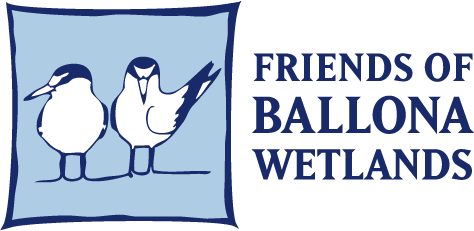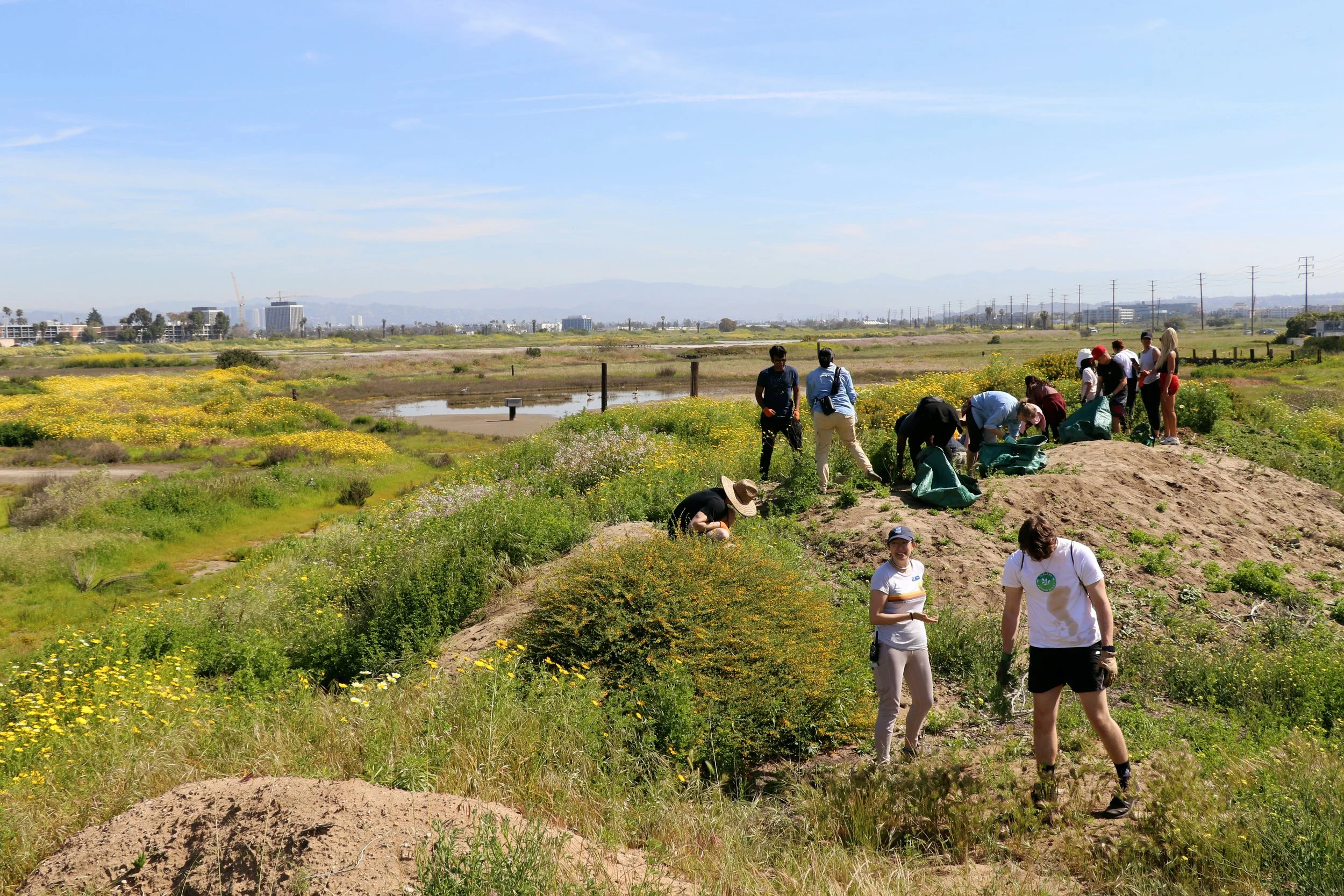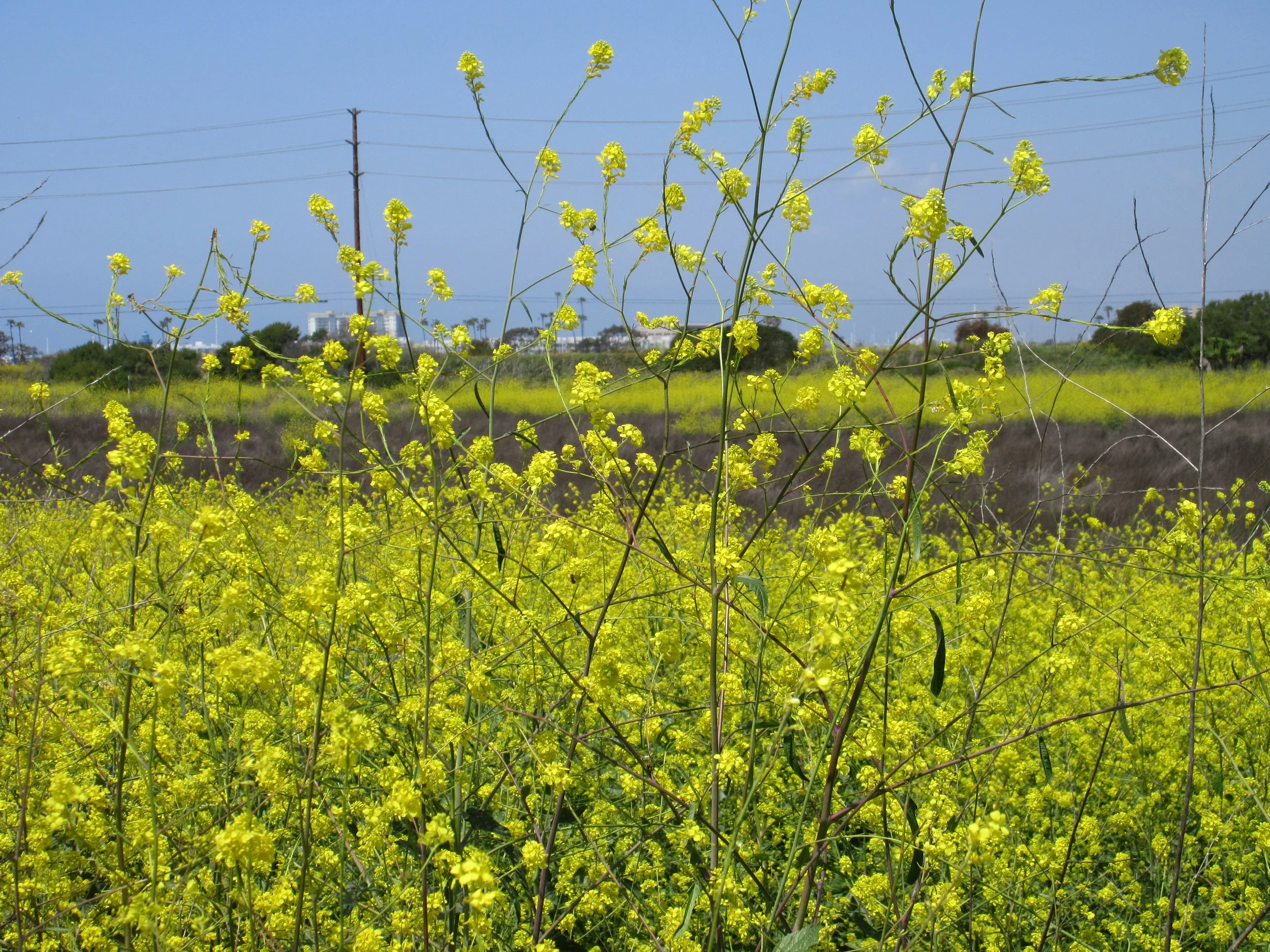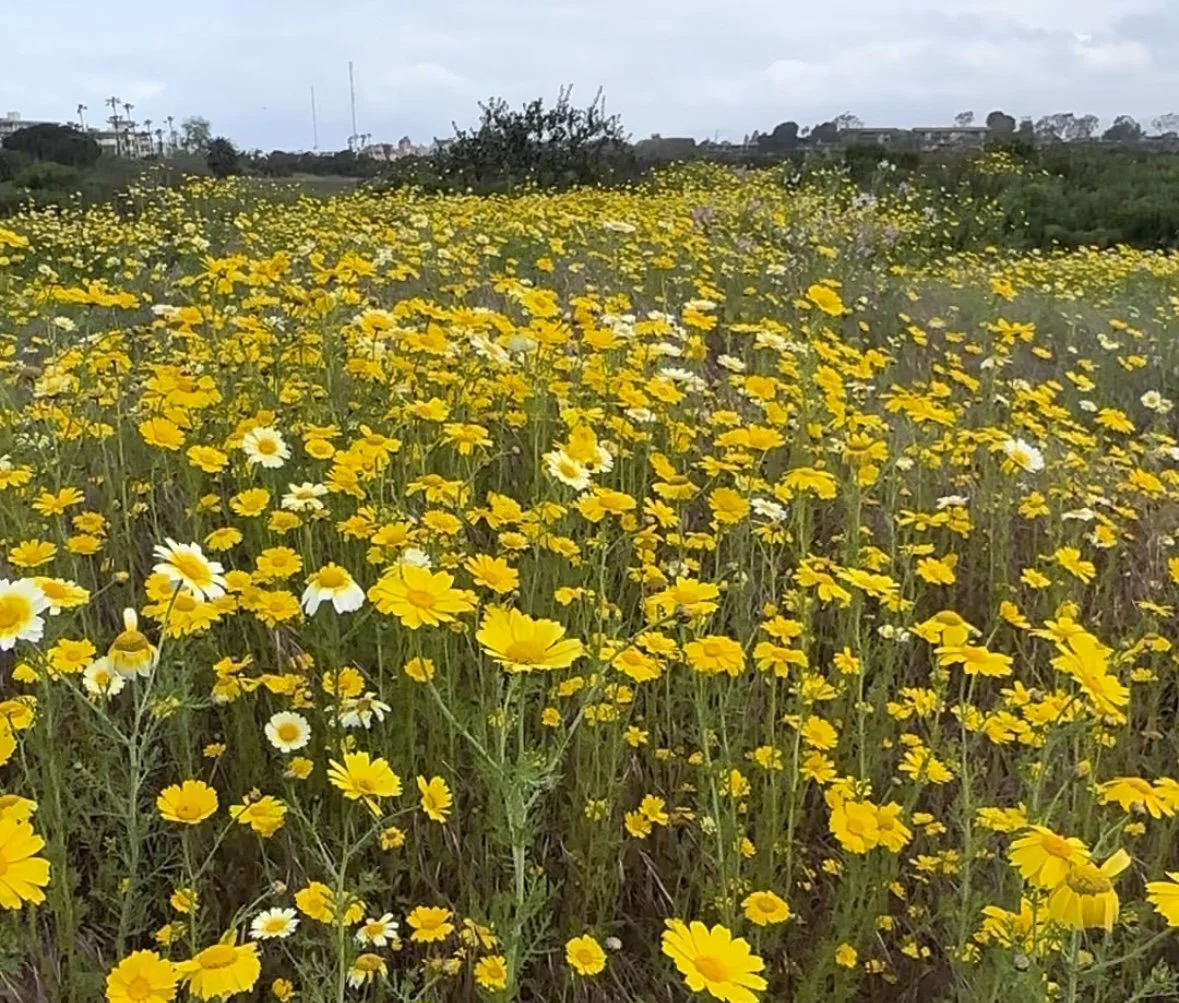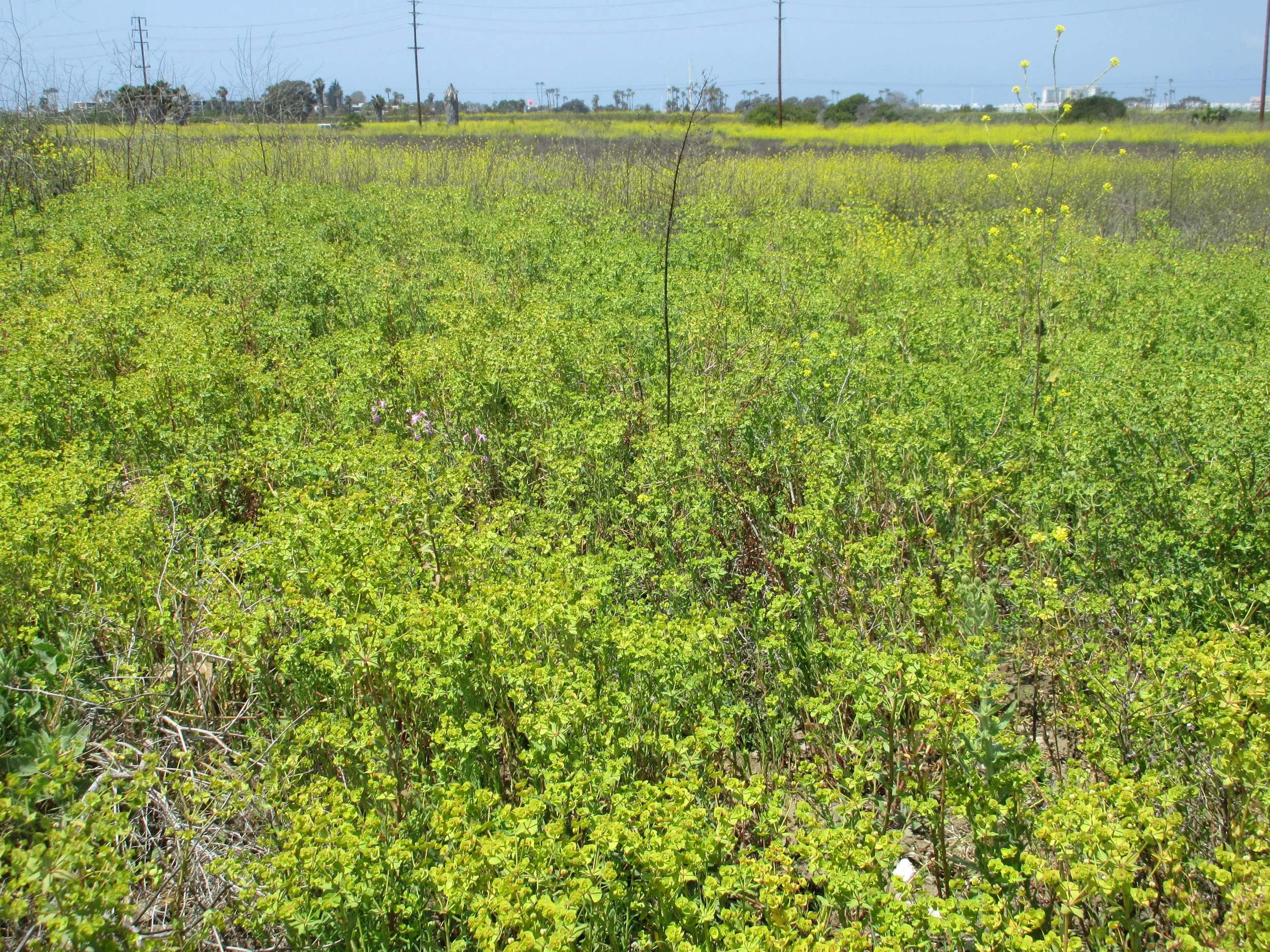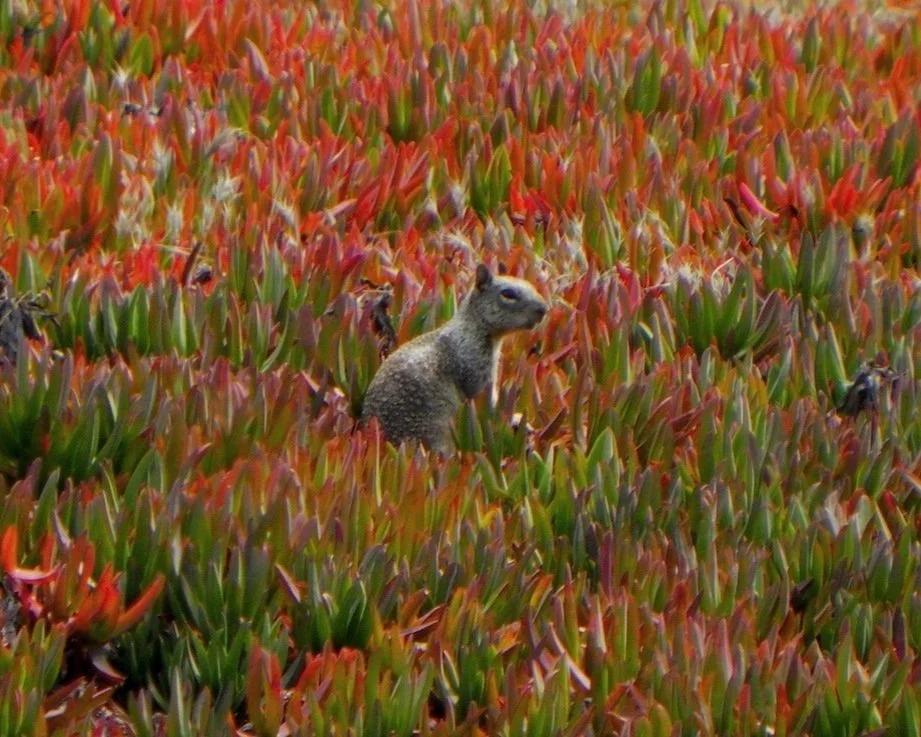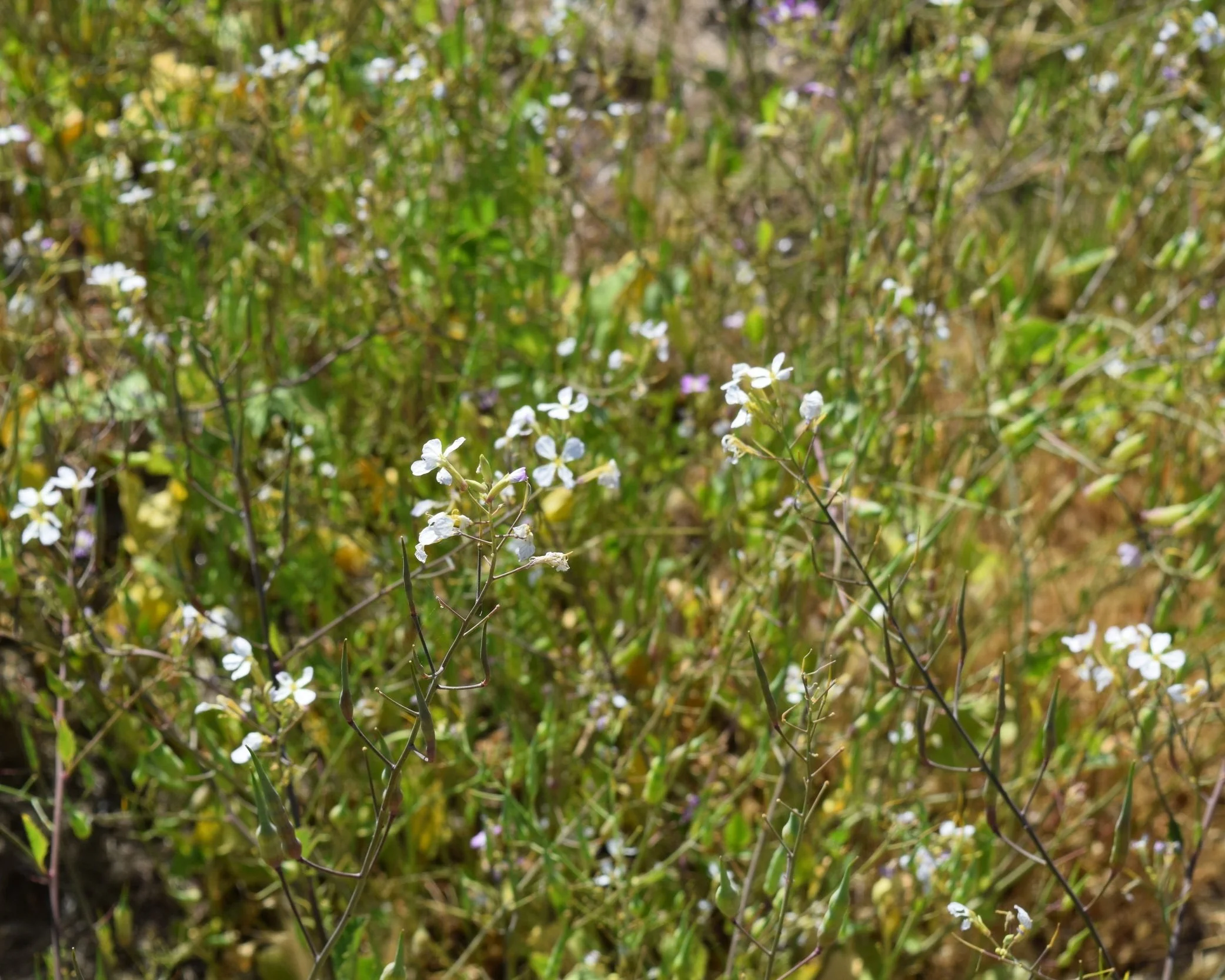California Invasive Species Action Week
It's California Invasive Species Action Week! This week aims to increase public awareness of invasive species issues and promote public participation in the fight against California's invasive species and their impacts on our natural resources!
Invasive species are non-native plants or animals that have been introduced to an ecosystem and have the potential to cause harm to the environment, economy, or human health. They can outcompete and displace native species, reduce biodiversity, alter ecosystem processes, and damage infrastructure. In the Ballona Wetlands, there are several invasive plants that are often mistaken for native species, such as Black Mustard, Crown Daisy, Carnation Spurge, Ice Plant, and Wild Radish.
Volunteers participating in our community habitat restoration on April 22, 2023 at the Ballona Wetlands Ecological Reserve.
Black Mustard (Brassica nigra) is a common weed that can grow up to six feet tall and produces large quantities of seeds that can remain viable for up to ten years. It outcompetes native plants for resources and can quickly take over disturbed areas.
Crown Daisy (Glebionis coronaria) is a fast-growing annual plant that can reach up to three feet tall. It can be found along roadsides and disturbed areas. Although it can be beautiful, the sea of yellow blanketing the Ballona Wetlands is a clear example of Black Mustard and Crown Daisy displacing native plants.
Carnation Spurge (Euphorbia terracina) is a rapidly spreading perennial plant that was introduced to California more recently. It has the potential to continue to spread all throughout the state. It produces a toxic sap that can irritate skin and eyes and can outcompete native plants for resources as well as hinder the growth and germination of native plants.
Iceplant (Carpobrotus edulis) is a succulent plant that was introduced to California as a landscaping plant along highways and railroads. It is now considered a highly invasive species that can form dense mats that displace native plants and alter soil chemistry.
Wild Radish (Raphanus raphanistrum) is an annual plant that can grow up to four feet tall and produces large quantities of seeds that can remain viable for up to ten years. It can spread rapidly and will outcompete and displace native plants.
It is incredibly important for our community to be educated about the impact of invasive species and to be able to recognize them in the local environment. YOU can help by reporting invasive species sightings early; we can prevent their spread and protect the local ecosystem. Joining a Community Habitat Restoration event and Growing Native plants at home will also help to promote biodiversity and restore ecological balance.
Together, we can work towards a healthier and more sustainable environment for all Angelenos.
To learn more about California Invasive Species Action Week and ways to get involved, click here.
Ballona Wetlands Ecological Reserve covered in a sea of invasive plant species.
